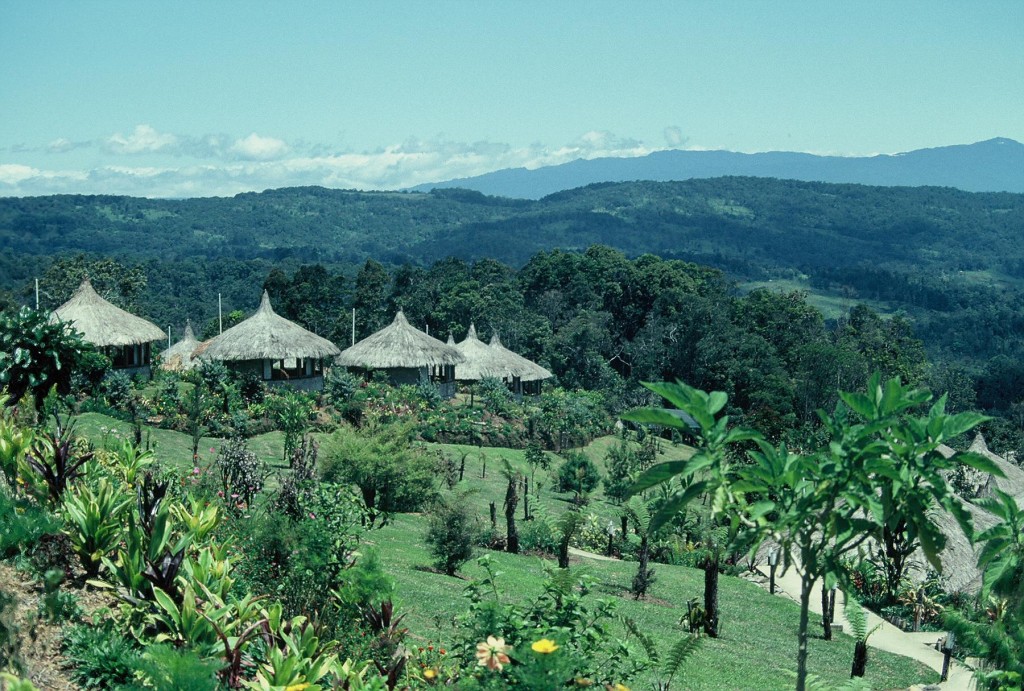Bird Man
Ted Davis has faced down charging rhinos and deadly snakes in pursuit of his lifelong passion
When it comes to high-risk activities, bird-watching doesn’t usually make it to the top of the list. But Professor Emeritus William “Ted” E. Davis, Jr., has faced peril more than once while observing birds for research or pleasure.
In 1965, Davis (GRS’66), who was 29, and his father were stalking grassland birds in Tanzania when their vehicle was charged by a black rhinoceros. (“We had a very good driver and he raced away from it,” he says.) But the scariest confrontation happened in Australia in 1990. He was a visiting research fellow at University of New England (Australia), collecting foraging data about thornbills. While out driving one day, he spotted an eastern brown—a five-foot-long creature said to be the world’s second most venomous snake, and one that is known to attack humans—slithering onto the dirt road ahead of him. “I hit the brakes, but I got so close to him that I lost sight of him,” he recalls. Davis peered out the window and suddenly found himself eye to eye with the snake, which had reared like a cobra. Fortunately, he’d rolled up the window seconds earlier; the reptile retreated.
“I have always heard that when people get terrified, they get this horrible cramp in the pit of their stomach,” he says. “That was the first and only time I’ve had that happen.”
Since retiring from BU in 2003, Davis has devoted most of his time to bird research. His lifelong interest in ornithology has taken him to more than 50 countries—sometimes accompanied by his wife, a biologist—and he’s seen more than 4,000 species of birds in the wild. (There are roughly 10,000 species in the world.) Despite all the traveling, he’s found time to publish histories of American and Australian ornithology—including Contributions to the History of Australasian Ornithology (published in an ongoing series by the Nuttall Ornithological Club) and Alexander Wilson: The Scot Who Founded American Ornithology (Belknap Press, 2013)—while his research on Australian birds has contributed to policy discussions about bird conservation. Old professorial habits, it seems, die hard.
Davis’ journey to ornithology—and encountering nature’s scariest customers—began when he was growing up in Quincy, Illinois, and then Brookline, Massachusetts, in the 1930s and ’40s. His father, a doctor and self-taught naturalist, “used to put me on his knee and read me stories by the great natural history adventurers of that era, particularly William Beebe and Carl E. Akeley,” he says. Davis accompanied his father on bird-watching rambles in the Boston area and attended meetings of Mass Audubon.
Despite his interest in birds, Davis didn’t initially consider a career in ornithology. A favorite high school teacher “made geology come alive for me,” persuading him to pursue that field of science. He received his PhD in geology at BU in 1966 and became a professor of natural sciences at CGS. But Davis continued to read about and watch birds as a hobby—one that took up more of his time until it supplanted geology as a professional interest. Apprenticing with ornithologists at the Manomet Bird Observatory (now Manomet) in Plymouth, Massachusetts, helped him complete the transition.
Davis says he enjoys studying birds because they are beautiful, and because the “incredible variety and complexity” of the creatures and their habitats means “there’s always something new to find out” about them. For example, he says, a wet winter in Australia will bring out different social behavior in birds than a dry one: “After a wet winter, many species will immediately settle down to nest, but after a dry one they may not nest at all.” He also enjoys the aspect of surprise in bird-watching. “There’s a sporting element to it,” he says. “You never know what you’re going to find. Sometimes it’s just a matter of luck, so you have to keep your eyes and ears open.” At Kenya’s Lake Nakuru, he saw more than two million flamingos; on South Georgia, a sub-Antarctic island, he walked among 100,000 king penguins.
Taking up ornithology as a second career didn’t prevent Davis from becoming a leader in the field. He’s the former president of the Association of Field Ornithologists, the Wilson Ornithological Society, and the Nuttall Ornithological Club, North America’s oldest ornithological organization.
These days, Davis does most of his research in Australia, largely because the continent’s dearth of ornithologists has left a lot of work to be done, especially in the field of foraging ecology. He and his longtime colleague, Australian ornithologist Harry Recher, observe birds in the field to study how different species forage for food in various ecosystems. Their published findings are a valuable resource for conservation societies, governmental agencies, and politicians involved in bird protection policy. For example, he and Recher have learned that setting aside small reserves of land for bird protection isn’t particularly helpful in Australia, because many species are nomadic.
“You have to have an ecosystem-wide or even a continent-wide approach to conservation,” he says. The duo has been advocating for a conservation plan for the entire Great Western Woodlands—which, at nearly 62,000 square miles, is “probably the largest intact woodland still left in Australia,” according to Davis—but progress has been slowed by conflicts with mining companies and other interests.
Working in far-flung locales exposes Davis to other kinds of challenges—including encountering leeches, scorpions, and huge spiders (sometimes discovered in the shower). “It gets your adrenaline flowing,” says Davis. Still, he has no desire to see another eastern brown and, whenever he travels Down Under, he always taps out his shoes before putting them on, “because you never know what’s crawled in there.”











